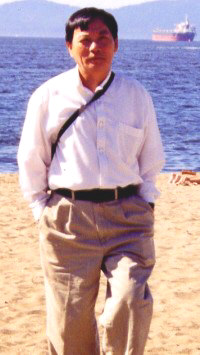 |
Aleksandar
Hemon Essays on
exile Apr 6th 2013
|From the print edition The Book
of My Lives. By Aleksandar Hemon.
Farrar, Straus & Giroux; 214 pages; $25.
Picador; £20. Buy from Amazon.com, Amazon.co.uk IN LATE 1991
Aleksandar Hemon was at his family’s mountain cabin above Sarajevo,
immersed in
literature, when the Bosnian Serb nationalist and eventual war criminal
Radovan
Karadzic appeared on television. When Mr Karadzic prophesied the
“annihilation”
of Bosnia’s Muslims, Mr Hemon writes in a new book of essays, it
surpassed
anything his then 27-year-old “humanist imagination” could conceive. Grappling
with the coexistence of humanism and genocide has been the Bosnian
writer’s
business ever since. A literary fellowship took Mr Hemon to Chicago,
where he
was stranded when the siege of Sarajevo began. He began producing works
of
fiction that circle relentlessly around the traumas of civil war and
exile.
“The Lazarus Project” was a finalist for the National Book Award in
2008. This
new collection examines, in non-fictional form, the defining rupture of
his
life. The earliest
piece is a short dagger aimed at a once-beloved literature professor
turned
genocidal Serbian nationalist. A fascinating essay on Mr Karadzic
reveals the
toxic myth embedded in a Serbian epic poem used to justify the
slaughter. The
reports become more intimate when Mr Hemon describes the dislocation of
exile
and the challenge of inventing a new life. “I wanted from Chicago what
I’d got
from Sarajevo: a geography of the soul,” he writes. A life, like a
city, is
built of places where one is known, a “personal infrastructure: your
kafana
(coffee shop); your barber; your butcher”. Pets too can be anchors:
when the
family dog, Mek, puts his muzzle in Mr Hemon’s lap, some of the self he
had
thought lost comes flooding back. Mr Hemon’s
fictions are virtuoso explosions of an adopted language that have
earned him
comparisons with Vladimir Nabokov. By comparison, these essays are
restrained. Readers
will recognise some as pale versions of stories he has fictionalised
more
exuberantly elsewhere. The best are acute meditations on exile and
otherness,
and the redeeming power of language. Mr Hemon
relates the story of Peter, an Assyrian with whom he plays chess, whose
only
son was shot by Iranian revolutionaries years ago. During a game, Peter
lashes
out at the vapid chatter at a nearby table. “It was wrong to talk about
nothing,” Mr Hemon observes, “when there was a perpetual shortage of
words for
all the horrible things that happened in the world.” Yet,
paradoxically, language is man’s best hope for addressing the
unspeakable, he
concludes in a wrenching account of his infant daughter’s battle
against brain
cancer. During the ordeal, his older daughter invents an imaginary
friend they
call Mingus, in order to use words for which she herself has no
experience.
Suddenly, Mr Hemon realises that this is what he has been doing all
these
years. “Fictional characters allowed me to understand what was hard for
me to
understand (which, so far, has been nearly everything),” he writes.
Decades ago
in Sarajevo, this talented writer had a radio programme called “Sasha
Hemon
Tells You True and Untrue Stories”. Readers would do well to tune in to
his new
stories now. From the
print edition: Books and arts |